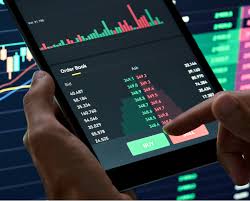
Unlocking the Secrets: Crypto Trading Indicators
In today’s fast-paced financial world, traders are continually seeking effective strategies to maximize their returns. One of the vital aspects of successful trading lies in understanding and utilizing Crypto Trading Indicators. These indicators enable traders to interpret market trends and make informed decisions. For an in-depth analysis of trading insights, refer to this resource: Crypto Trading Indicators https://www.stockopedia.com/content/stockopedia-at-mello-2018-a-quality-line-up-awards-and-investor-camaraderie-359588/
What are Crypto Trading Indicators?
Crypto Trading Indicators are mathematical calculations based on the price, volume, or open interest of a cryptocurrency. They are designed to help traders forecast future price movements and identify trading opportunities. By analyzing trends and market sentiment, these indicators can provide critical insights into the behavior of various cryptocurrencies over time.
Types of Crypto Trading Indicators
Various types of indicators exist, each serving different purposes and providing unique insights. Below are several commonly used Crypto Trading Indicators:
1. Moving Averages
Moving averages are one of the most popular technical indicators. They smooth out price data by creating a constantly updated average price over a specific period. The two most common types are the Simple Moving Average (SMA) and the Exponential Moving Average (EMA). Traders often use moving averages to identify trends: if the price is above the moving average, it may indicate an uptrend, while a price below the moving average may suggest a downtrend.
2. Relative Strength Index (RSI)

The RSI is a momentum oscillator that measures the speed and change of price movements. It ranges from 0 to 100 and is typically used to identify overbought or oversold conditions in a market. An RSI above 70 may indicate that a cryptocurrency is overbought, while an RSI below 30 suggests it is oversold. Traders often use these signals to predict potential reversals in the market.
3. Moving Average Convergence Divergence (MACD)
The MACD is another momentum indicator that demonstrates the relationship between two moving averages of a security’s price. The MACD is calculated by subtracting the 26-period EMA from the 12-period EMA. The result is the MACD line. A nine-day EMA of the MACD, called the “signal line,” is plotted above the MACD line, which acts as a trigger for buy or sell signals. Traders look for crossovers, divergence, and rapid rises or falls in the MACD to identify potential price movements.
4. Bollinger Bands
Bollinger Bands consist of a middle band (the SMA) and two outer bands that are two standard deviations away from the middle band. This indicator helps traders assess volatility in the market. When the bands contract, it suggests that volatility is low, while a significant expansion may indicate the possibility of a breakout. Traders often use the bands to identify potential buy or sell opportunities.
5. Fibonacci Retracement Levels
Fibonacci retracement levels are based on the key Fibonacci numbers, which traders use to predict potential reversal levels. By plotting the important Fibonacci levels on a chart, traders can identify potential areas of support and resistance. These levels are often used in conjunction with other indicators to confirm potential entry or exit points.
How to Use Crypto Trading Indicators Effectively
While Crypto Trading Indicators can provide valuable insights, using them effectively requires understanding their limitations and integrating them into a broader trading strategy. Here are some key tips for utilizing indicators:

1. Combine Indicators
Relying on a single indicator can lead to false signals. Combining multiple indicators can provide a more comprehensive view of market movements and help confirm signals. For example, using both RSI and MACD can complement their respective strengths and weaknesses.
2. Understand Market Conditions
Differentiating between trends, consolidation phases, and market reversals is crucial for applying indicators effectively. Different indicators may perform better in different market conditions. For instance, trend-following indicators work best in trending markets, while oscillators may be more effective in ranging markets.
3. Use Risk Management Strategies
Always implement risk management strategies when trading. Setting stop-loss orders and understanding position sizing can help manage potential losses while allowing for profitable trades. Taking trades based on indicators without considering risk management can lead to significant losses.
4. Keep Learning and Adapting
The cryptocurrency market is continually evolving, making it essential for traders to stay informed and adapt their strategies. Continuous learning about new indicators, market trends, and trading psychology can help traders refine their approaches and improve their performance.
Conclusion
Crypto Trading Indicators are powerful tools that can significantly enhance a trader’s ability to analyze market trends and make informed decisions. By understanding various indicators and how to use them effectively, traders can improve their chances of success in the dynamic and often unpredictable world of cryptocurrency trading. As always, while indicators can guide traders, they should be just one component of a comprehensive trading strategy that includes risk management and a thorough understanding of market conditions.
بدون دیدگاه